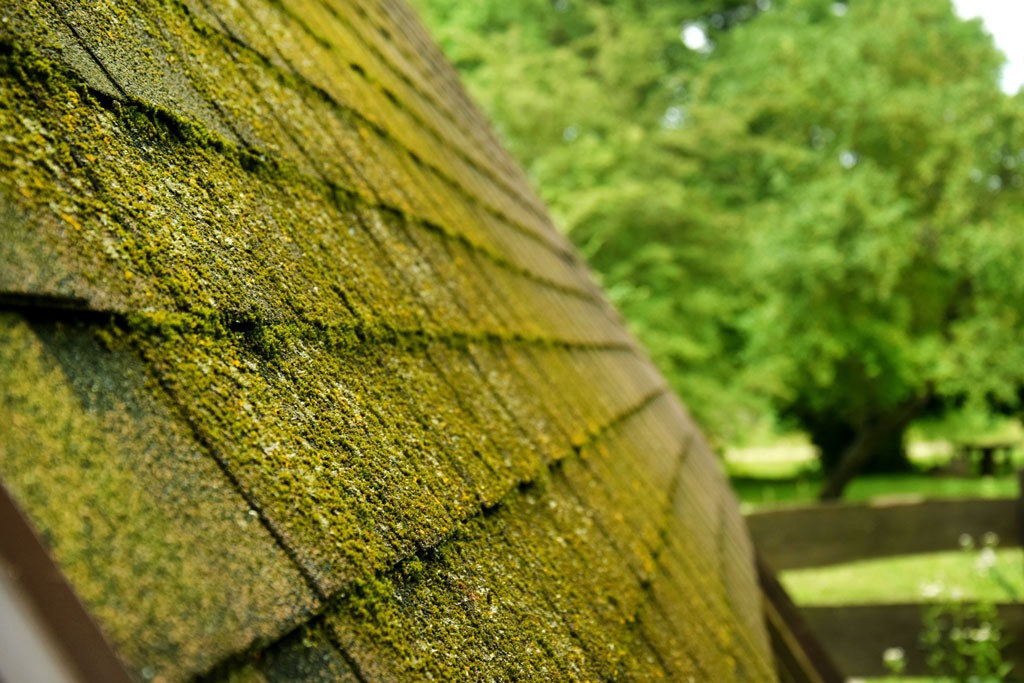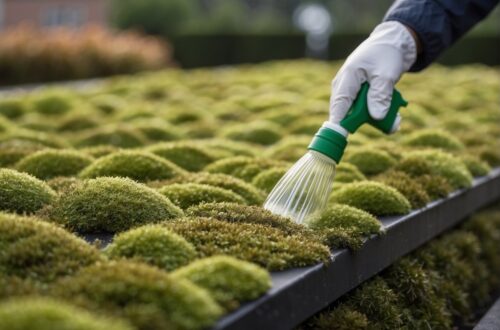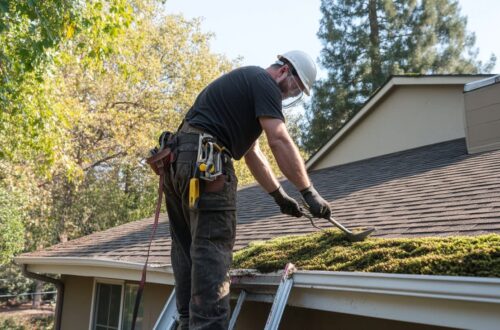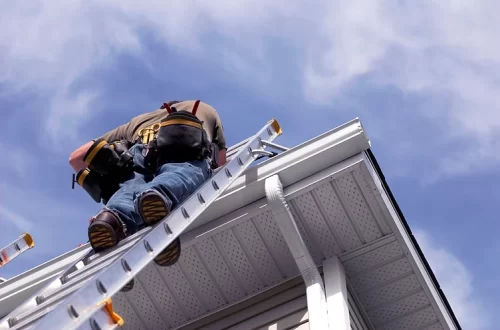Moss growth on roofs is a common problem, especially in damp and shaded environments. While moss may add a rustic charm to some structures, it can lead to significant damage over time. Roof moss retains moisture, weakening roofing materials and potentially causing leaks or structural damage. To prevent these issues, homeowners and property managers often seek effective moss removal solutions. The debate between chemical and natural methods continues, with each approach offering distinct advantages and drawbacks. Understanding these options can help in making an informed decision for roof maintenance.
The Appeal of Chemical Roof Moss Removal
C hemical treatments are widely used for moss removal due to their fast-acting properties and effectiveness. These solutions typically contain powerful ingredients such as zinc sulfate, potassium salts of fatty acids, or bleach-based compounds designed to kill moss and prevent regrowth.
hemical treatments are widely used for moss removal due to their fast-acting properties and effectiveness. These solutions typically contain powerful ingredients such as zinc sulfate, potassium salts of fatty acids, or bleach-based compounds designed to kill moss and prevent regrowth.
One of the main advantages of chemical treatments is their ability to deliver immediate and noticeable results. Many of these solutions begin breaking down moss within hours or days, making them an attractive option for those who need a quick solution. Some chemical products also have residual effects, preventing moss from returning for several months or even years, reducing the frequency of treatment.
However, chemical-based solutions come with potential downsides. Many of these substances can be harmful to the surrounding environment, particularly if they run off into gardens, lawns, or nearby water sources. Some chemicals may also cause damage to shingles, particularly if used excessively or left on the roof for extended periods. Homeowners should carefully follow application instructions and consider the long-term effects on their roofing materials.
Understanding Natural Moss Removal Methods
Natural moss removal solutions have gained popularity among homeowners seeking eco-friendly alternatives. These methods rely on biodegradable, non-toxic ingredients that break down moss without harming plants, pets, or surrounding landscapes. Popular natural approaches include using vinegar, baking soda, salt solutions, or simply manual removal techniques.
One of the biggest advantages of natural moss removal is its minimal impact on the environment. Unlike chemical treatments, these methods do not introduce potentially harmful substances into the ecosystem. Additionally, natural solutions are often safer for individuals applying them, as they reduce exposure to harsh chemicals that could cause skin irritation or respiratory issues.
However, natural moss removal may require more effort and repeated applications to achieve the desired results. Vinegar and baking soda, for example, may take longer to kill moss and often need to be applied multiple times before the moss completely deteriorates. Manual removal, such as using a brush or scraper, can be physically demanding and time-consuming, making it less practical for large roofs.
Comparing Effectiveness and Long-Term Results
When deciding between chemical and natural moss removal, effectiveness is a key consideration. Chemical treatments tend to work faster and provide longer-lasting results, reducing the need for frequent reapplications. Some chemical solutions also contain preventive ingredients that discourage moss regrowth, making them a preferred choice for homeowners who want a low-maintenance solution.
Natural methods, on the other hand, may take longer to show results and often require ongoing effort to keep moss at bay. While manual removal is effective, it does not prevent moss from returning unless additional preventive measures are taken, such as improving roof ventilation or increasing sun exposure.
In terms of long-term roof health, natural methods may be gentler on roofing materials. Some chemical treatments, particularly those containing bleach or strong acids, have the potential to cause deterioration over time. Homeowners should weigh the benefits of rapid moss removal against the possibility of roof damage when selecting a treatment method.
Environmental and Safety Considerations
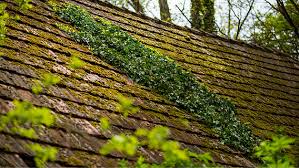 Environmental impact is another important factor when choosing between chemical and natural moss removal methods. Many chemical solutions contain ingredients that can harm nearby vegetation, wildlife, and water systems. Zinc and copper-based treatments, for example, can be toxic to aquatic life if they enter storm drains or waterways. Some municipalities have regulations on certain chemical treatments due to their potential environmental hazards.
Environmental impact is another important factor when choosing between chemical and natural moss removal methods. Many chemical solutions contain ingredients that can harm nearby vegetation, wildlife, and water systems. Zinc and copper-based treatments, for example, can be toxic to aquatic life if they enter storm drains or waterways. Some municipalities have regulations on certain chemical treatments due to their potential environmental hazards.
Natural methods, by contrast, offer a safer approach for both the environment and homeowners. Vinegar, baking soda, and manual removal techniques do not pose the same risks to plants and animals. However, homeowners should still exercise caution when using any substance on their roofs, as runoff can still affect nearby areas.
Safety is another crucial consideration. Chemical treatments often require protective gear, including gloves, masks, and eye protection, to avoid exposure to harsh ingredients. Improper handling of chemicals can lead to skin burns, respiratory issues, or accidental poisoning. Natural solutions, while generally safer, should still be applied carefully to prevent slips or falls while working on a roof.
Cost and Accessibility of Different Solutions
Cost is another factor influencing the decision between chemical and natural moss removal. Chemical treatments vary in price, with some professional-grade solutions costing more than DIY alternatives. However, their long-lasting effects may reduce the frequency of application, potentially making them more cost-effective in the long run.
Natural methods, such as using vinegar or manual removal, tend to be more budget-friendly, as these materials are widely available and inexpensive. However, repeated applications may be necessary, leading to additional costs over time. Homeowners should consider both the immediate and long-term expenses when deciding which method to use.
Preventing Future Moss Growth
Regardless of the chosen moss removal method, prevention plays a crucial role in maintaining a moss-free roof. Improving drainage, increasing sunlight exposure, and trimming overhanging branches can help reduce moss growth. Installing zinc or copper strips along the roof ridge can also create an environment that discourages moss from developing. Regular roof maintenance, such as cleaning debris and ensuring proper ventilation, can further extend the life of a roof and prevent moss-related damage.

